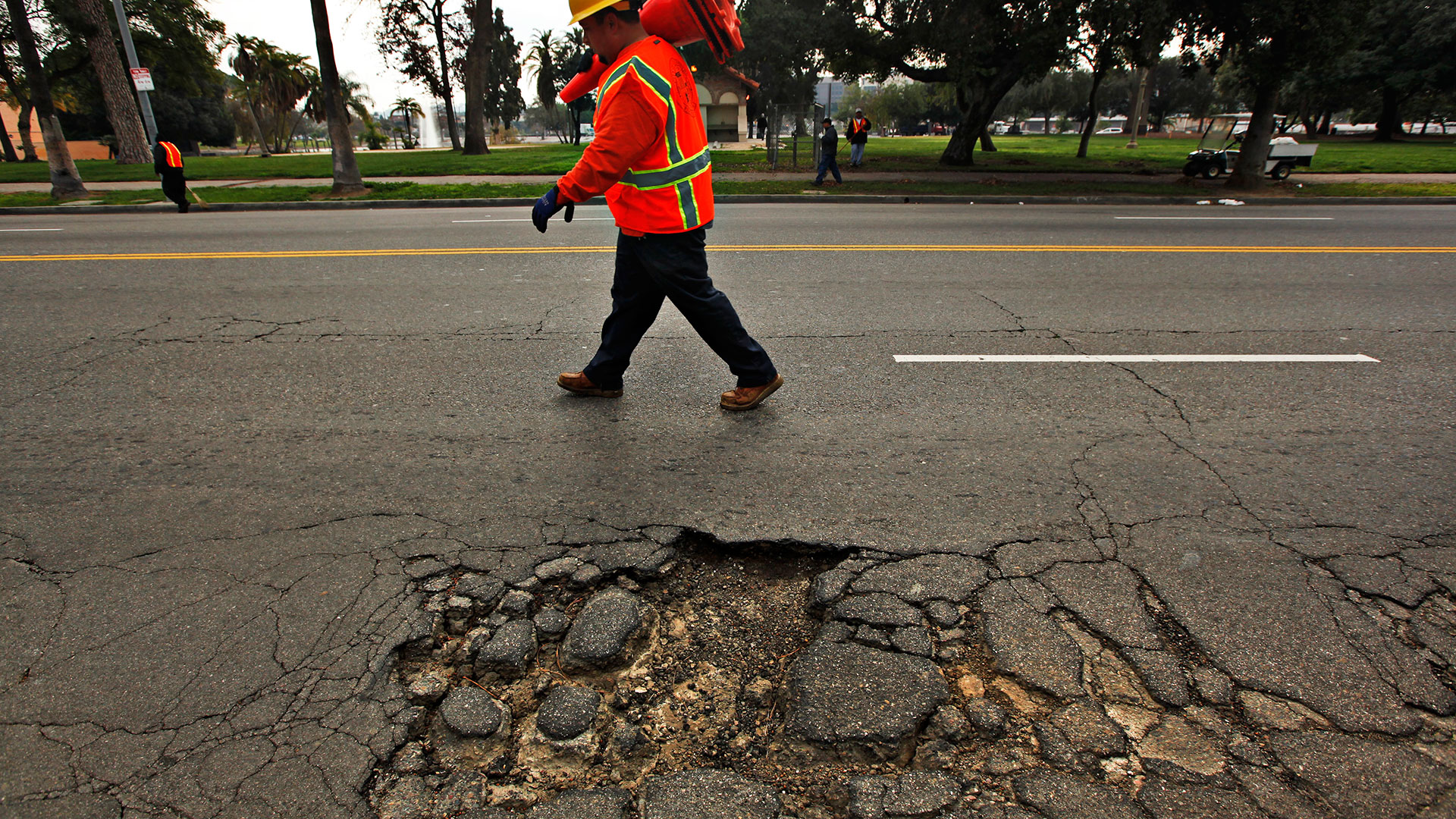

The three common questions about autonomous vehicles are how will they work, what will we do with and in them, and who’ll take the fall when robots start clobbering fire hydrants. Many insiders believe we’re not asking the transcendent question that really needs answering: how are we going to reorganize our world to make autonomous transport possible?
There are at least two broad strokes to that answer, the first being to address our shitty roads and haphazard urban planning. The US Department of Transportation estimates 65 percent of our roads are in poor condition, and unlike Europe we have no nationally standardized code for infrastructure like traffic signals and many transport ideograms. Stop lights can be oriented horizontally or vertically. Some roads have painted lines, some roads don’t, some lane markings are reflective, old lines might have faded and who knows when the city will bother to repaint them. Construction zone signage is almost never uniform even in a single suburb. For these reasons and many more, experts say we are nowhere near ready for autonomous cars.
Those infrastructure issues are minor to humans but major obstacles to machine vision. To deal with potentially huge and sudden gaps in urban information, carmakers load cars up with sensors, processing power, and redundant systems so they can either take quick action or safely hand control back to the driver. Even with the quest to lower costs and produce highly precise three-dimensional maps, though, the extra costs and complexity adds thousands of dollars to the price of a new vehicle with autonomous features.
Some groups are trying to help municipal authorities get ahead of the coming shift. The US DOT is disbursing up to $40 million under its Smart City Challenge to subsidize an urban transportation technology experiment in a city yet to be chosen. That could include, for example, trying out a stop light that communicates with vehicles.
Outside of that, however, forward thinking is hard to find. A paper published by the National League of Cities said only six percent of US cities were planning for autonomous cars, while 50 percent of them were planning new highways to deal with conventional traffic. That brings us to the other broad stroke: autonomy means so much more than increasing traffic density and sleeping in the driver’s seat.
For instance, MIT’s SENSEable City Lab said self-piloted cars could get everyone in a major city to their destinations with 80 percent fewer cars on the road. An OECD simulation based on Lisbon traffic said it could be done with 90-percent fewer vehicles. If human-driven traffic plummets when Uber has millions of driverless Mercedes-Benz S-Classes making runs and cars can park themselves outside of dense urban centers when not in use, do you need so much parking capacity? When cars can talk to one another, do you need speed limit signs and stop lights? If you don’t, how do you make use of all that freed up parking space and lighter traffic?
Organizations like the Driverless Cities Project and Complete Streets are working on comprehensive answers that account for traffic flows, urban planning, landscape architecture, and of course, the unknown. One ex-Google entrepreneur said “the world’s mobility challenges will increasingly be met with silicon rather than asphalt.” But before that, we need to address the challenges with forethought.